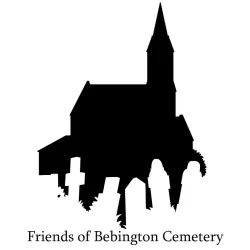The Genesis of Bebington Cemetery: Addressing a Growing Need
Welcome back readers! Today, we step back in time to explore the beginnings of this historical landmark and the events that led to its establishment. Join me as we take a quick look into the mid-19th century, where the Parish of Bebington faced a pressing issue, ultimately giving birth to Bebington Cemetery.
A Growing Problem:
In the mid-19th century, the Parish of Bebington found itself grappling with a significant concern – limited space for burials in St. Andrew’s and other local churchyards. As the population grew, the available burial space dwindled, leading to overcrowding and unsanitary conditions. Concerned churchwardens and community members recognized the urgency to address this challenge.
The Formation of Bebington Burial Board:
In January 1867, churchwardens and community members came together to form the Bebington Burial Board. Under the guidance of Reverend G. I. Feilden as chairman and with members like Maxwell Scott, J. Middle, T. M. Downham, T. Hitchmough, and W. Turner Jr., the board took up the responsibility of finding a solution to the potential burial crisis.
Securing Suitable Land:
The first objective of the Bebington Burial Board was to secure a suitable plot of land for a new burial ground, situated not far from St. Andrew’s churchyard. Negotiations with prominent landowners, including Sir Stanley Massey and George Orred, proved fruitful. In the end, they acquired 22 acres of arable fields at a cost of £16,000.

The land purchased in 1867
Designing the Cemetery:
With the site secured, the Board turned its attention to the laying out and construction of the cemetery. To ensure its functionality and efficiency, they appointed Mr. W. A. Richardson as the surveyor. Mr. Richardson was responsible for designing the cemetery layout, drainage system, and other necessary infrastructure.

1898 Map of cemetery which was then Isolated in farmlard
The Creation of Chapels:
In January 1867, a notice was issued to the public, inviting interested parties to submit tenders for the various works required for the cemetery’s development. Detailed plans and specifications were made available at the office of Mr. Richardson, the Surveyor to the Burial Board, located at Holt-Hill, Tranmere. As part of the project, three chapels were constructed – one for the Church of England, one for Nonconformists, and another for Roman Catholics. Only the central chapel now remains, the two others were sadly demolished. These chapels, designed by architect Mr. G. W. Hamilton, would provide a space for different religious denominations to hold funeral services.

The insignia of the office buildings of Bebington Burial Board by the main gates
The Consecration:
By mid-June 1868, the cemetery was completed, with the total cost amounting to around £17,000. A ceremony was held to consecrate the new burial ground, where the Bishop of Chester presided over the event, imparting his blessings upon the chapels and grounds in accordance with the rites of the Church of England.
A Self-Sustaining Cemetery:
The Bebington Cemetery was designed to be self-sufficient, with revenues generated from the sale of burial plots and other funeral services, the fees also ensured its upkeep, gardening and other maintenance tasks were undertaken.

1971 – An aerial photograph of the changing landscape around the cemetery.
Marking the Beginning:
On the 23rd of June 1868, it was 62-year-old Catherine Beckett, the wife of a clerk of works from Higher Tranmere, who became the first person to be buried in the new cemetery. Her interment marked the beginning of a new chapter in Birkenhead’s history, as the cemetery provided much-needed relief to the overcrowded churchyard, offering a new spacious area for mourners to pay their respects to their loved ones.

The first burial in the cemetery – Catherine Beckett’s badly eroded headstone.
C of E – Section F – Plot 238
Stay tuned for the next instalment, where we take a look at one of the thousands of touching inscriptions in the cemetery, this one, dedicated to the servant and friend of a local antiquarian, who you may have just heard of before!
Yours,
Rosalie Reeves
